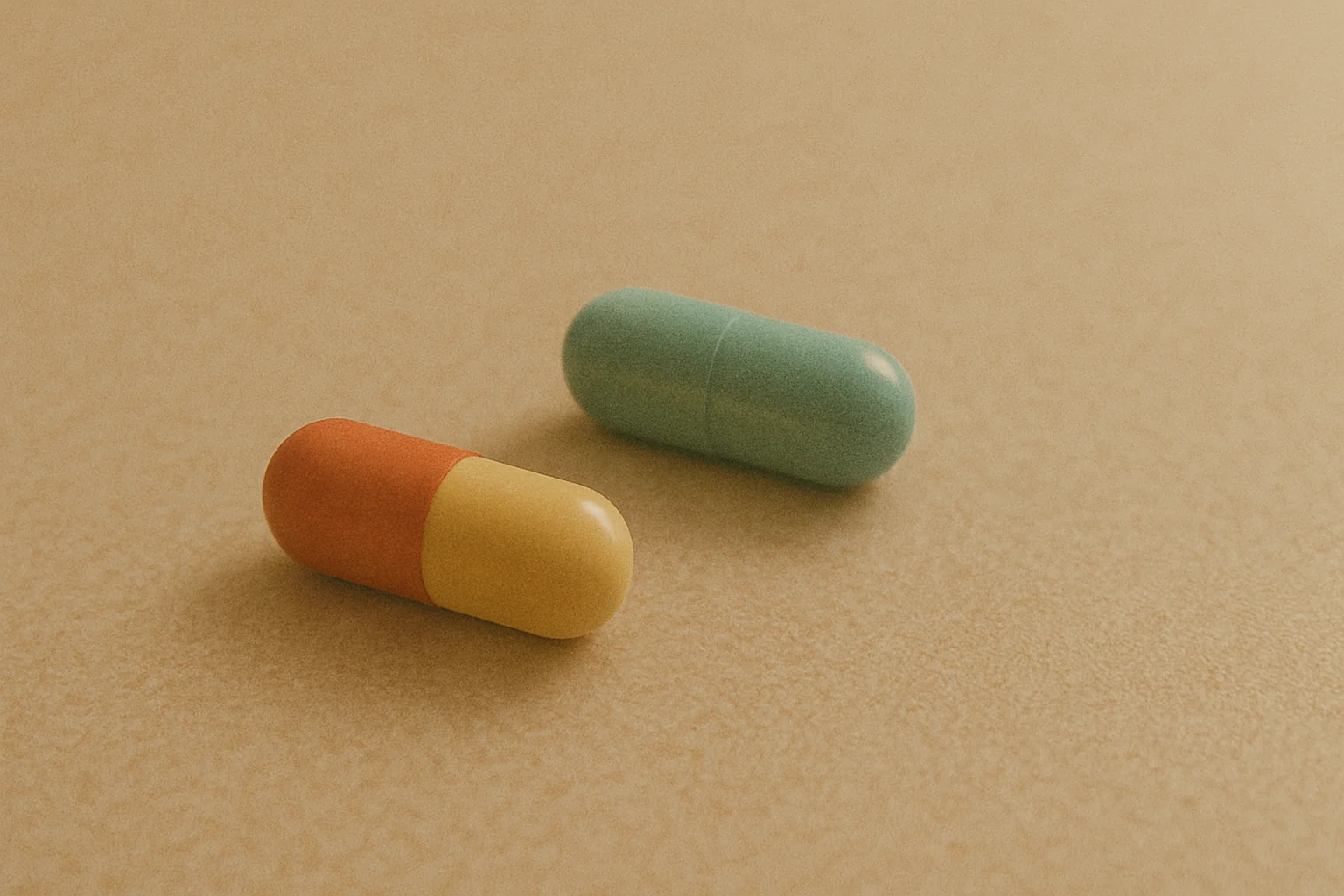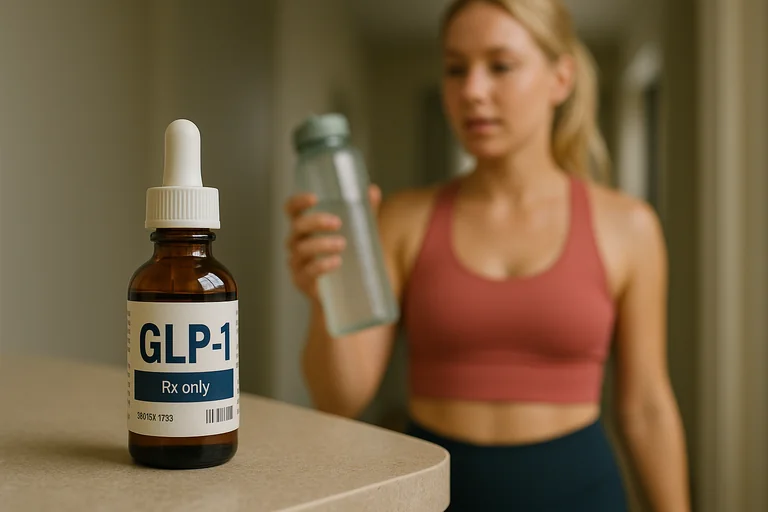A 2 minute assessment to get a personalized mental health or alcohol recovery plan.
Think these similar-sounding medications are basically the same? One saves lives in minutes during overdoses, while the other helps maintain long-term recovery - and mixing them up could be fatal.
What You'll Discover:
- Why naloxone is an emergency overdose reversal drug that works in minutes.
- How naltrexone supports long-term recovery from alcohol and opioid addiction.
- The critical timing differences that make using the wrong one dangerous.
- When and how to use each medication safely and effectively.
If you've heard about medications used to treat opioid addiction or reverse overdoses, you've probably encountered two very similar-sounding names: naloxone and naltrexone. These two medications are often confused because of their nearly identical names, but understanding the difference between them could literally be a matter of life and death.
Or at least, that's what many people assume - that medications with such similar names must do similar things. In actuality, one is an emergency medication that can reverse a fatal overdose in minutes, while the other is a long-term treatment taken daily or monthly to maintain recovery. The confusion isn't just embarrassing - it's dangerous. After all, thinking you can use naltrexone to reverse an overdose could mean someone dies while you're administering the wrong medication. But in actuality, more recent education efforts are trying to clarify these critical differences as the opioid crisis continues.
It may be time to learn exactly which medication does what if saving lives or supporting recovery is a priority.
Naloxone Is the Emergency Overdose Reversal Drug That Works in Minutes
Don't let the similar names fool you into thinking these medications are interchangeable. The role of naloxone in emergency situations is completely different from naltrexone's use in recovery.
Many researchers, emergency responders and addiction specialists will tell you that naloxone is specifically designed for overdose emergencies - it has no other medical purpose. WebMD makes this crystal clear: Naloxone is a drug that can temporarily reverse the effects of an opioid overdose. Even if you have no medical training, you can administer naloxone to someone who's overdosing. It's particularly crucial now with fentanyl making overdoses more common and deadly. For example, someone who thinks they're using heroin might actually be using fentanyl-laced drugs that cause immediate overdose.
Now that you have a better idea that naloxone is purely for emergencies, let's delve further into how it actually works and why timing is everything, some of which may be very surprising.
How Naloxone Actually Reverses an Overdose and Why Speed Matters
The undeniable truth is that opioid overdoses kill by stopping breathing. There's the initial euphoria from the drugs, followed by respiratory depression that can be fatal within minutes.
The Life-Saving Mechanism
This is one of the major breakthroughs in emergency medicine. When someone overdoses on opioids, the drugs flood their brain's opioid receptors, causing breathing to slow or stop. Naloxone works by rapidly kicking the opioids off these receptors. WebMD explains that you don't need to be a health care professional to give the drug. Research shows naloxone:
- Works within 2-5 minutes
- Reverses respiratory depression
- Can be given as nasal spray or injection
- Is safe even if person didn't overdose on opioids
- Requires no special training to administer
The Critical Window for Administration
Although naloxone works quickly, every second counts during an overdose. Brain damage from lack of oxygen begins within 4-6 minutes. But here's the crucial part - naloxone's effects are temporary. WebMD warns that the effects only last 30-90 minutes. The temporary effect means:
- Overdose symptoms can return
- Multiple doses may be needed
- Emergency medical care is still essential
- Person needs monitoring after naloxone
- Stronger opioids like fentanyl may require more naloxone
Signs You Need to Give Naloxone Immediately
After recognizing an overdose, immediate action is critical. That's because waiting to be "sure" could mean death.
Signs requiring naloxone include:
- Blue lips or fingernails
- Gurgling or snoring sounds
- Unconsciousness/can't wake them
- Slow or no breathing
- Limp body
Worried about giving naloxone unnecessarily? It won't harm someone who hasn't overdosed on opioids.
The Accessibility Revolution
Many people are surprised to find that naloxone is available without prescription in most states. It's now believed that widespread naloxone access saves thousands of lives annually because:
- Pharmacies can dispense without prescription
- Community programs distribute free naloxone
- First responders carry it routinely
- Family members can keep it on hand
The Withdrawal Reality Nobody Mentions
Another serious issue with naloxone is that it can trigger immediate withdrawal. Even if it saves someone's life, they might wake up in severe withdrawal with:
- Vomiting and nausea
- Rapid heartbeat
- Sweating and shaking
- Extreme discomfort
- Potential aggression or confusion
The issue of withdrawal is why medical follow-up is essential. There are far too many cases of people leaving after naloxone revival and overdosing again hours later.
The Other Critical Drug - Naltrexone for Long-Term Recovery
The other major medication in this confusion is naltrexone, which serves a completely different purpose. You may think it's related to emergency treatment, but naltrexone is strictly for maintaining recovery after someone has already detoxed.
Not all addiction medications work the same way, but naltrexone has unique properties. SAMHSA explains that naltrexone is approved by the FDA to treat both opioid and alcohol use disorders. Very few medications have this dual approval. More often medications work for one substance or the other, not both.
What might be most troubling is that people sometimes think naltrexone can reverse overdoses like naloxone. Other misconceptions include thinking it's addictive or causes a high - neither is true.
How Naltrexone Blocks the Rewards of Alcohol and Opioids
Now with better understanding of addiction neuroscience, we know exactly how naltrexone helps recovery. But more importantly, we understand why it can't be used in emergencies.
What's most concerning about the confusion is that naltrexone requires complete detox first. SAMHSA specifies patients must wait at least 7 days after short-acting opioids and 10-14 days for long-acting ones. Essentially, any opioids in your system when starting naltrexone triggers severe withdrawal. That is why medical supervision is mandatory.
This is obvious when you understand the mechanism, but many people don't realize the danger. For opioid addiction, naltrexone blocks receptors so opioids can't create euphoria. SAMHSA describes how naltrexone blocks euphoric and sedative effects of opioids. For alcohol, it blocks endorphin release that makes drinking rewarding. It doesn't prevent intoxication but reduces the pleasure.
The takeaway is that naltrexone prevents relapse by removing the reward from substance use, while naloxone reverses overdoses that are actively happening.
The good news is that naltrexone isn't addictive and doesn't cause withdrawal when stopped.
The Dangerous Mistakes People Make Confusing These Medications
Clearly, mixing up these medications isn't just a minor error. But understanding the specific dangers helps prevent potentially fatal mistakes.
In addition to the obvious risk of using the wrong medication, timing errors can be catastrophic. Giving naltrexone to someone actively using opioids causes precipitated withdrawal - potentially severe enough to require hospitalization. Thinking naltrexone can reverse an overdose wastes precious minutes when naloxone is needed.
Let's look at a real-world scenario. Imagine someone finds their loved one unconscious from an overdose. If they grab naltrexone instead of naloxone, thinking they're similar, the person could die while they're trying to administer the wrong medication. Those wasted minutes could be the difference between life and death.
Another key consideration is that naltrexone comes as pills or monthly injections - neither works for emergencies. While naloxone nasal spray works in minutes, naltrexone pills take an hour to absorb. The injection is even slower and must be given by medical professionals.
NEED TO KNOW: Naloxone = emergency overdose reversal in minutes. Naltrexone = long-term recovery maintenance after complete detox. Never substitute one for the other.
Safety Considerations That Could Save Your Life or Someone Else's
If you're dealing with addiction in your family or community, understanding both medications' safety profiles is crucial.
Naloxone is remarkably safe with virtually no serious side effects when used appropriately. The main "risk" is precipitating withdrawal in dependent users, but this discomfort is far better than death from overdose. You can't overdose on naloxone itself, and giving it to someone who hasn't taken opioids won't cause harm.
Naltrexone requires more careful monitoring. SAMHSA warns about potential liver damage or hepatitis with symptoms like stomach pain, dark urine, or yellowing eyes. Regular liver function tests are recommended, especially for people with existing liver problems.
The overdose risk after stopping naltrexone is particularly dangerous. Because naltrexone blocks opioid effects, people lose their tolerance. If they relapse after stopping naltrexone, their previous dose could now cause fatal overdose. This reduced tolerance has led to numerous deaths.
For alcohol use, naltrexone doesn't prevent intoxication - just reduces pleasure. People can still get dangerously drunk while taking it, they just won't enjoy it as much. This can lead to drinking more trying to achieve the expected effect.
But here's what's critical: both medications work best as part of comprehensive treatment. Naloxone saves lives but doesn't treat addiction. Naltrexone supports recovery but requires counseling and support to be most effective.
When to Use Each Medication and How to Get Them
The decision about which medication to use isn't actually a decision - the situation dictates it completely. If someone is overdosing, only naloxone will help. If someone is in recovery, naltrexone might be appropriate.
For naloxone, get it before you need it if anyone in your life uses opioids - prescribed or illicit. Many pharmacies dispense it without prescription. Community programs often provide free naloxone with brief training. Keep it accessible and check expiration dates regularly.
For naltrexone, medical evaluation is essential. A healthcare provider must confirm you're fully detoxed, check liver function, and determine if you're a good candidate. The choice between daily pills or monthly injection depends on your situation and preferences.
Understanding how naltrexone helps with alcohol cravings specifically can help determine if it's right for alcohol use disorder. The medication works differently for alcohol than opioids but can be equally effective.
The key is having the right medication available when needed. Naloxone should be readily accessible anywhere opioids are used. Naltrexone should be carefully managed as part of a recovery program.
Concerned about addiction in your life or ready to explore treatment options?
If you're dealing with opioid issues, having naloxone on hand could save a life - get it today from your pharmacy or local program. If you're in recovery and wondering whether naltrexone could support your sobriety, professional assessment is essential. Choose Your Horizon offers 100% online, confidential access to Naltrexone for alcohol use disorder with medical supervision.
Interested in learning whether naltrexone could help maintain your recovery? Take the online Alcohol Use Assessment to explore evidence-based treatment options and connect with healthcare providers who understand both emergency interventions and long-term recovery support.




